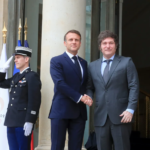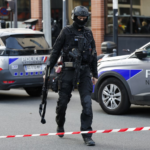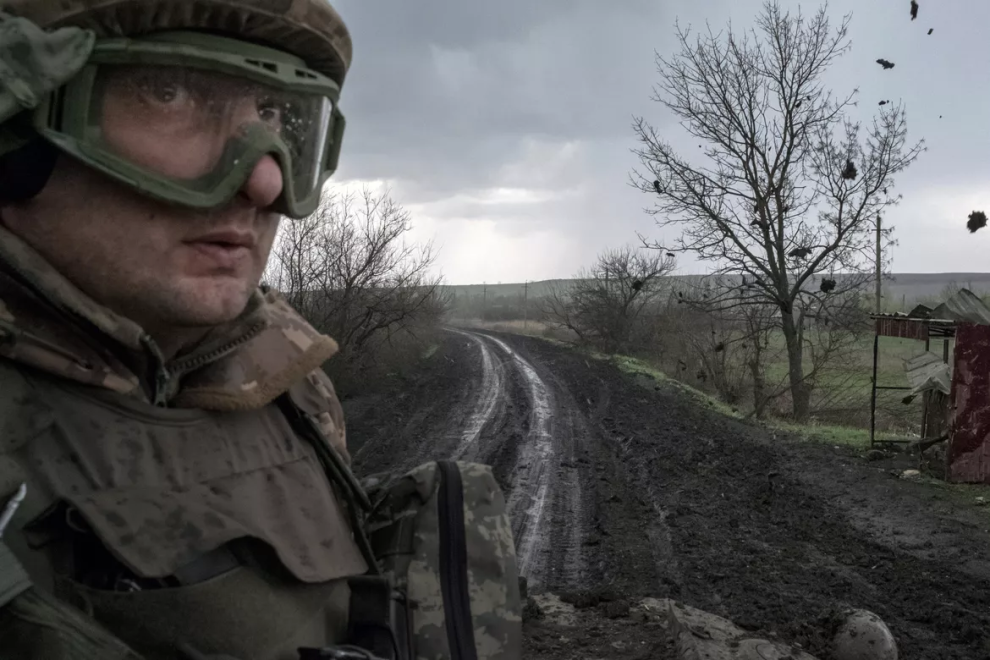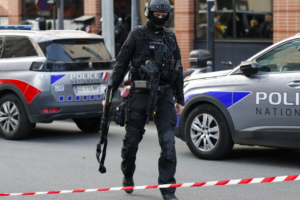KOSTYANTYNIVKA, Ukraine — The seesaw fight for a sunflower field raged for weeks with neither Ukrainian nor Russian forces gaining an upper hand, but for Ukraine’s army, that counts as a win in the crucial battle for access roads into the city of Bakhmut.
Inside the battered eastern Ukrainian city, the site of one of the longest-running battles of Russia’s war in Ukraine, urban combat is raging in pitched, block-by-block fights for control. Here, Russian forces have been slowly advancing.
But in farm fields and villages on Bakhmut’s outskirts, Ukrainian military officials say Kyiv’s forces have fought the Russian army essentially to a standstill in the battle for two key roads, the T504 highway and a route known as the 506.
Six weeks after the start of a Ukrainian operation to reinforce supply lines outside Bakhmut and protect the roads, Ukrainian military officials say they have thwarted, at least for now, a Russian effort to sever those roads and surround the city.
To the southwest of Bakhmut, Ukrainian forces have fought hard to protect the T504 highway. Ukraine’s soldiers made a tactical retreat of a few hundred yards and now hold a commanding position in a trench overlooking the sunflower field. The field is one of dozens the Ukrainians must defend along the front to the south of the road.
“Every day is the same,” said a Ukrainian soldier who asked to be identified only by rank and name, Pvt. Ruslan, in keeping with Ukrainian military rules.
Russians fire mortars or send small groups of troops forward, nothing more, he said.
“They check us, ‘Hey guys, are you still there?’” Ruslan said of the fighting. “When they understand that yes, we are here, we will fight, they back off.”
In late February, Ukraine was close to losing the battle for Bakhmut, according to an assessment in a batch of what appear to be classified operational briefs prepared by the Pentagon and Joint Staff and leaked on social media this month. Senior U.S. officials have said the FBI has opened an inquiry into the leak.
At the time, two Russian flanking maneuvers to the northwest and southwest of the city were close to encircling Bakhmut. A single access road, the 506, remained open for Ukrainian forces and the few civilians still in the city, but it was under Russian artillery fire. Ukraine’s commanding general in the east, Gen. Oleksandr Syrsky, called the route the “last breathing tube.”
Ukrainian commanders decided to reinforce the defenses of the roads rather than retreat, according to the leaked documents. Ukraine’s army deployed many soldiers to the fight for Bakhmut that it had hoped to hold in reserve for a counteroffensive anticipated in the coming weeks or months, and its forces have sustained heavy casualties.
Russia’s assaults have dwindled near Bakhmut and elsewhere along the front line as Moscow’s winter offensive appears to be winding down without having gained significant ground, the Institute for the Study of War, a Washington-based research group, said Saturday in an assessment of the battlefield.
“Current Russian attacks are focused on distracting and dispersing Ukrainian troops in anticipation of counteroffensive operations,” it said.
By late last week, fighting to the south of the T504 highway had settled into an almost predictable routine of mortar strikes and nighttime raids, neither of which threaten a breakthrough, Ukrainian soldiers said. That has secured the lifeline of mud-spattered, artillery-cratered asphalt for resupplying ammunition and evacuating wounded Ukrainian troops.
Success in the battle for the roads, of course, will do Ukraine less lasting good if the city center falls to Russia. Signs of setbacks in the street fighting point to losses of most of the city. Last week, Russian forces raised a flag over the ruins of the City Hall.
A visit to the front line south of the T504 highway Friday found the line of contact running through rolling farm fields cut by ravines, with groves of trees and small meadows covered in green grass, small purple wildflowers, and dotted with craters from mortars.
The road leading toward the front was a tableau of mud from tracked vehicles. A storm blew over and rain splattered into the puddles, as both thunder and artillery boomed.
To reach the trenches, Ukrainian soldiers walk spread out, keeping 20 yards or so between them, lest a shell by chance hit a large group. At one position, two soldiers with shovels dug into a hillside, burrowing out a new bunker.
Here, the Ukrainian soldiers are between the two sides’ artillery positions. From time to time, a howitzer fires and the shell can be heard shrieking on its arc overhead before exploding on the other side.
The soldiers keep watch at night for ground assaults. During the day, they try to avoid being spotted by Russian drones. Once, a radio crackled with a warning — “A bird is flying!” — of an enemy drone in the sky.
A faint buzz of an electric motor wafted from above. Ukrainian soldiers stepped into bunkers, lest they be spotted in the open and become targets for artillery. One ran to retrieve a device for jamming radio signals, which he called “the spike.” But the drone flew away before “the spike” could be switched on.
The Ukrainian troops call the closest trench to the enemy the zero line. Here, parapets of sandbags form firing and observation positions. Soldiers burrowed hollows in the walls of the trench, to huddle in during Russian shelling.
Ukrainian soldiers trudge about in sucking, ankle-deep mud that makes a squeaking sound with each step. Small-arms fire and booms from artillery ring out every minute or so.
Pvt. Serhiy, who volunteered to join the unit in January, leaving a wife and two children behind in a small town near Odesa in southern Ukraine, was on his fourth three-day rotation at the zero line Friday. Time here is mostly spent waiting and watching, punctuated with brief moments of terror, he said.
“It’s hard to sleep,” he said. “You lie down and still hear everything. You think you are resting, but you are just lying and listening.”
A few days ago, a Russian troop crept forward and fired a rocket-propelled grenade at this position. It blew up a few yards short of the trench.
Col. Serhiy Ilnytsky, the soldiers’ commander, who uses the nickname Sokil, or the Falcon, said the goal for Ukraine in the battle of Bakhmut was not so much to protect the city — once home to around 70,000 people, it is now mostly ruined — as bog down and weaken the Russian army before the anticipated counteroffensive.
“Bakhmut is just a pile of stones now,” he said. “It’s just a place where Russian soldiers go through the meat grinder.”
Of his position in the fighting for the access roads, he said he felt it was solid.
“I now have the field in front of me,” he said. “For me, it’s a good spot.”
This article originally appeared in the New York Times.
Source : SpokesMan





































